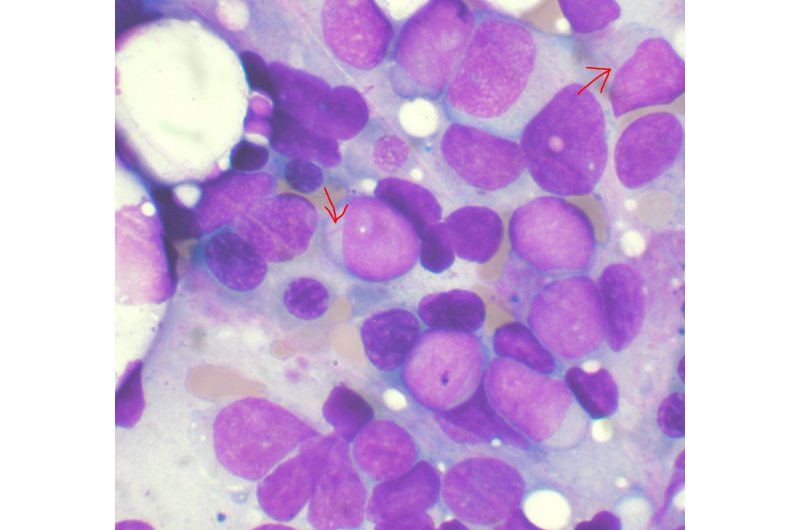Study leads to breakthrough in better understanding acute myeloid leukemia

A study led by the University of Birmingham has made a breakthrough in the understanding of how different genetic mutations cause acute myeloid leukaemia.
One of the most common acute leukaemia's in adults with around 2,400 people in the UK diagnosed with the disease each year, the survival rates for those diagnosed with acute myeloid leukaemia are very poor and new treatments are needed.
Researchers at the Universities of Birmingham and Newcastle worked in collaboration to study the DNA of two types of acute myeloid leukaemia in an effort to explain how clinical prognosis can differ.
Professor Constanze Bonifer, of the Institute of Cancer and Genomic Sciences at the University of Birmingham, said: "Is has been known for a long time that acute myeloid leukaemia is highly heterogeneous, involving different disease-causing genetic mutations.
"This in turn leads to highly variable clinical outcomes, with some patients responding better to certain treatments than others.
"Prior to this study, the reason for the differences in response to treatment was unknown.
"We discovered how two closely related oncogenes - genes which have the potential to cause cancer - differently reprogram blood stem cells in acute myeloid leukaemia and send them spiralling out of control."
The study, published today in Cell Reports, highlights the difficulties faced in understanding the heterogeneity of the disease.
Dr Justin Loke, a Kay Kendall Clinical Fellow from Birmingham Queen Elizabeth Hospital's Haematology Department which is affiliated with the University of Birmingham's Institute of Cancer and Genomic Sciences, added: "We used state-of-the-art molecular technology that studies all genes within leukaemic cells to investigate why two types of the disease with mutations in the same gene display a completely different clinical profile.
"We showed that the maintenance of the leukaemic state of these two types of acute myeloid leukaemia is dependent on different sets of normal genes, therefore identifying a route to developing tailored and personalized treatments for patients with different cancer-causing mutations in order to specifically target each tumour."
Since the early 1990s, acute myeloid leukaemia incidence rates have increased by more than a quarter (28 per cent) in the UK. One in 200 men and one in 255 women will be diagnosed with acute myeloid leukaemia during their lifetime.
More information: Loke et al. (2017). 'RYBX1-ETO and RUNX1-EVI1 Differentially Reprogram the Chromatin Landscape in t(8;21) and t(3;21) AML' DOI: 10.1016/j.celrep.2017.05.005

















